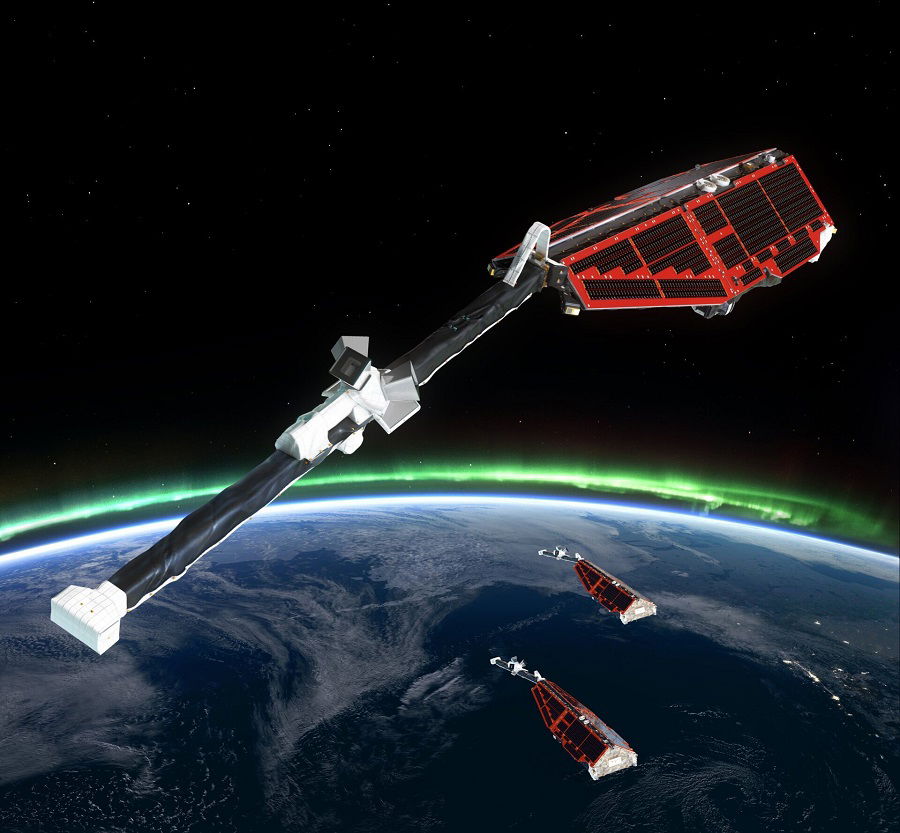Scientists have discovered that a weak spot in Earth’s magnetic field—known as the South Atlantic Anomaly—is continuing to grow. Using 11 years of precise data from the European Space Agency’s Swarm satellite mission, researchers found that this region, which stretches over South America and the South Atlantic Ocean, has expanded by an area almost half the size of continental Europe since 2014.
Earth’s magnetic field acts as an invisible shield that protects life from harmful cosmic rays and solar radiation. It is generated deep inside the planet by swirling molten iron in the outer core, around 3,000 kilometers below the surface. This motion produces electric currents, which in turn create Earth’s magnetic field. The system is constantly shifting, strengthening in some places and weakening in others.
The Swarm mission—made up of three identical satellites launched in 2013—has provided scientists with the most detailed and long-lasting record of magnetic field changes ever captured from space. By studying magnetic signals coming from Earth’s core, crust, oceans, and atmosphere, the mission helps researchers understand how our planet’s protective shield is evolving.
The South Atlantic Anomaly was first identified in the 19th century, but recent Swarm data show that it is expanding faster than ever. The anomaly is particularly important for space missions, as satellites passing through it are exposed to stronger radiation that can disrupt electronics, damage hardware, or cause temporary blackouts.
According to Professor Chris Finlay of the Technical University of Denmark, the weakening magnetic field is not uniform. “The South Atlantic Anomaly is not just one big block,” he explains. “It’s behaving differently in different areas. The field is weakening much faster toward Africa than near South America.”
This uneven weakening is linked to unusual magnetic patterns deep below the surface, at the boundary between Earth’s molten outer core and its rocky mantle. Normally, magnetic field lines flow outward from the southern hemisphere, but in the South Atlantic Anomaly, some lines are reversed and flow back into the core. Swarm’s data show one of these reversed regions slowly drifting westward beneath Africa, contributing to the growing weakness of the field there.
While the magnetic field weakens in the South Atlantic, other areas are changing in different ways. In the northern hemisphere, the field has strengthened over Siberia but weakened over Canada, shifting the position of the magnetic north pole toward Russia. This movement has implications for navigation systems that rely on magnetic field maps.
Despite these changes, scientists emphasize that Earth’s magnetic field is far from collapsing. “Swarm is giving us the big picture of our planet’s dynamic heart,” says Anja Stromme, ESA’s Swarm Mission Manager. “The satellites are still healthy and providing excellent data, helping us better understand our ever-changing planet—and how it protects us.”
https://knowridge.com/2025/10/earths-magnetic-shield-is-weakening-over-the-atlantic-scientists-warn/
